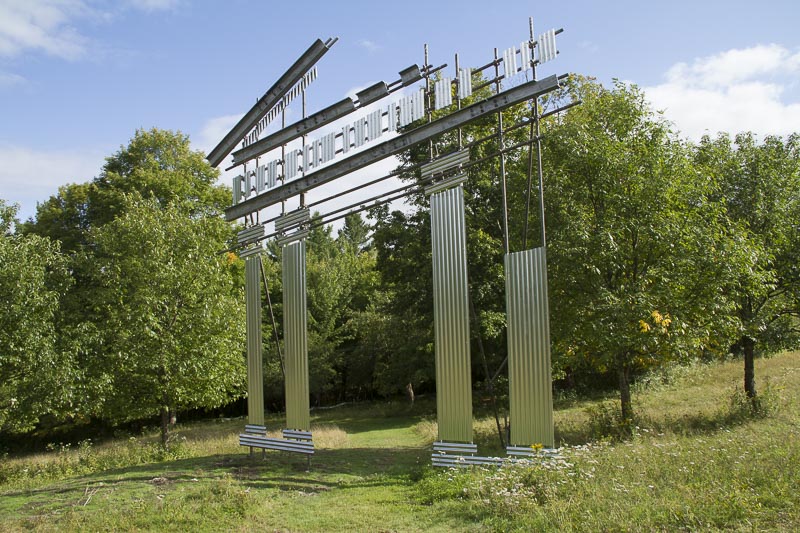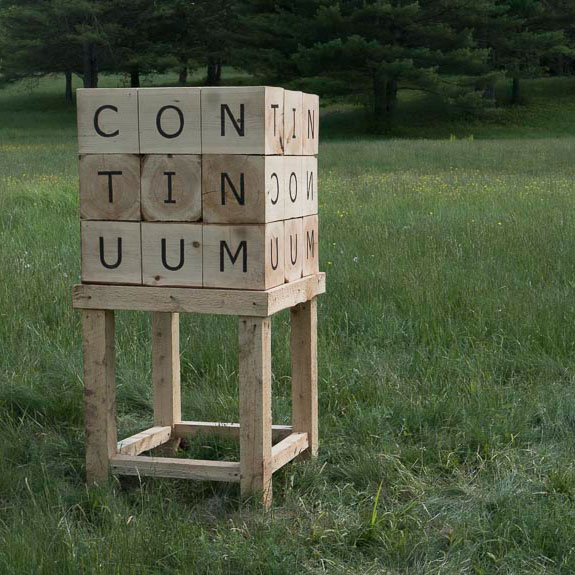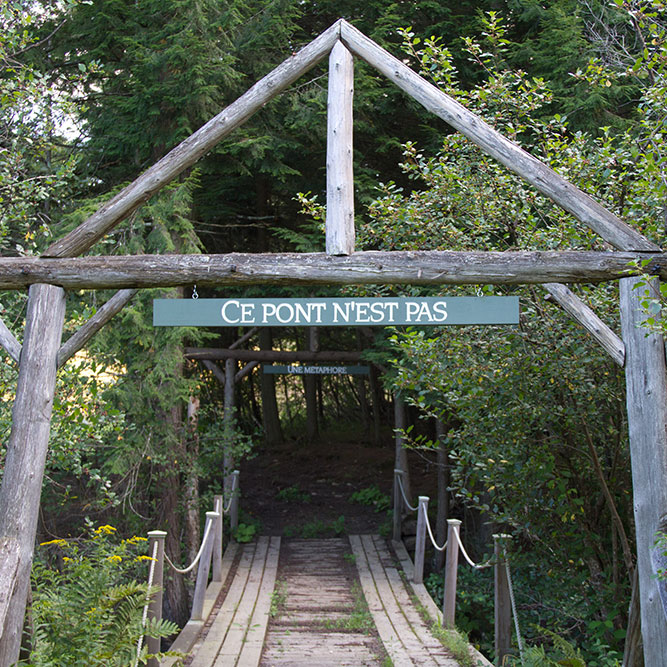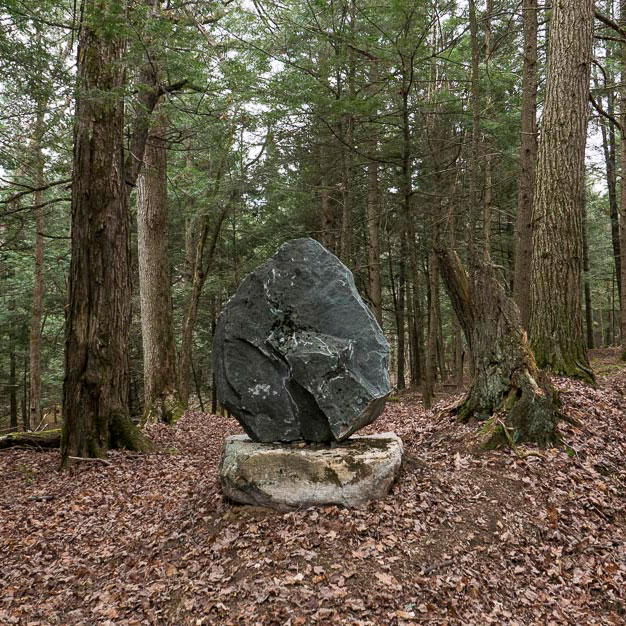The Temple Façade
Patterson Webster (in collaboration with John Hay)
The Temple Façade 2018
Corrugated tin, steel rods and clips
Collection of the artist
This sculptural work juxtaposes appearance and reality, raising questions about each. Four sheets of corrugated tin stand, column-like, beneath a triangular pediment, suggesting the front wall of a Greek temple. One column is incomplete, rendering the temple’s condition ambiguous. Is the structure being constructed or demolished? Falling apart or being transformed into something new?
Equally ambiguous is the nature of the structure itself. Supported by steel posts, the façade resembles both a billboard and the false fronts of Hollywood Westerns. What is this façade? The entrance to a place of worship or to a commercial enterprise? The front “door” doesn’t lead into a building; instead, a path leads through the façade towards ancient apple trees backed by dense woods.
Rising in those woods are three corrugated-tin columns, linked by a rippling tin band. Unlike the temple façade’s flat columns, these columns are round and three-dimensional, marking a processional path that echoes The Past Looms Large, the previous section of Timelines. There is no path into the woods, yet the columns and tin band invite entry into a space that implies a temple built by nature.
The Temple Façade continues the Greek theme of the preceding installations. Like them, it plays — with conventions, with expectations and with the viewer’s perceptions. A forced-perspective design shows the façade at an angle to the viewer, making it appear farther away than it actually is. In the wooded area beyond, the tin band shrinks in width as it recedes while the columns remain the same height, a further manipulation of perspective.
This installation continues and amplifies themes established in previous installations. Two chairs and two signs spelling out “Perspective” reverse optical expectations, and by doing so, ask you to consider how your views and actions are affected by expectations and by where you stand, literally and metaphorically. The Past Looms Large, with its an explicit link to Greek architecture and design, asks you to think about how easily your expectations for the future, or with what comes next, can be upset. It continues to play with optical illusions.







